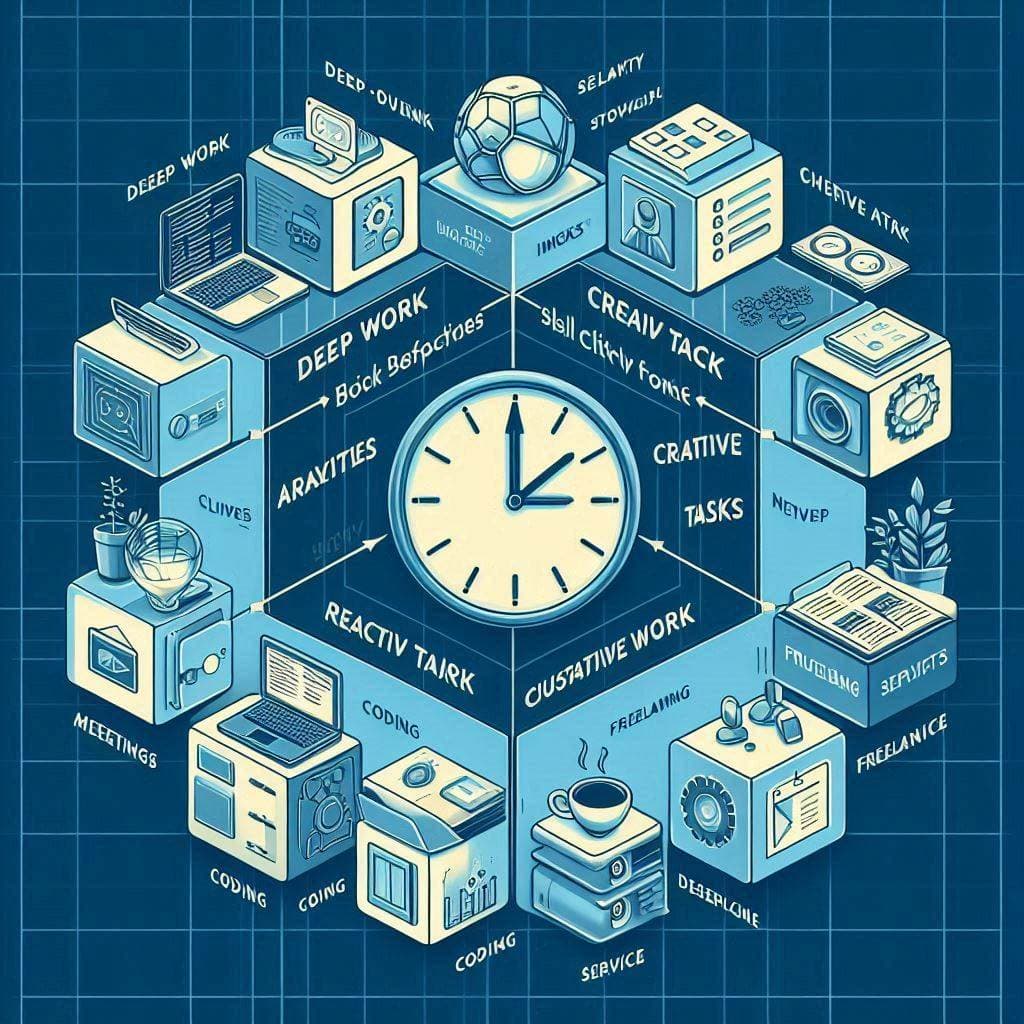Can Time Blocking Be Adapted For Different Types Of Tasks Or Professions?

Time blocking can indeed be adapted for different types of tasks and professions. Here are some ways time blocking can be customized:
Adapting Time Blocking for Different Tasks
Deep Work vs. Shallow Work
- Deep work tasks that require intense focus (like writing, coding, or strategic planning) can be given longer uninterrupted blocks, typically 2-4 hours.
- Shallow work like emails, administrative tasks, or quick phone calls can be batched into shorter 30-60 minute blocks[1].
Creative vs. Analytical Tasks
- Creative tasks may benefit from looser time blocks to allow for inspiration and flow.
- Analytical tasks often work well with more structured time blocks with clear start and end times.
Reactive vs. Proactive Work
- Reactive work (like customer service) can have flexible time blocks with buffer time built in.
- Proactive work (like project planning) can have more rigid time blocks scheduled in advance[4].
Adapting Time Blocking for Different Professions
Managers and Executives
- Block out time for meetings, strategic planning, and reviewing reports.
- Include flexible blocks for unexpected issues or impromptu meetings[1].
Creative Professionals
- Schedule longer blocks for focused creative work.
- Include shorter blocks for administrative tasks and client communication.
Software Developers
- Allocate large blocks for coding and debugging.
- Schedule shorter blocks for code reviews and team meetings[3].
Customer Service Representatives
- Create flexible blocks to handle customer inquiries.
- Include time for training, team meetings, and administrative work.
Freelancers
- Block time for client work, business development, and administrative tasks.
- Include buffer time between projects[2].
Key Principles for Adapting Time Blocking
-
Prioritize important tasks: Schedule your most critical work during your peak productivity hours.
-
Be realistic: Estimate task durations accurately to avoid overbooking yourself.
-
Include buffer time: Allow for unexpected tasks and transitions between activities.
-
Review and adjust: Regularly evaluate your time blocks and make changes as needed.
-
Customize block sizes: Adapt the length of time blocks based on the nature of your work and personal preferences[5].
By tailoring time blocking to your specific tasks and profession, you can create a personalized system that enhances your productivity and work-life balance.
Go From Adapting Time Blocking For Different Tasks Back To Time Blocking
Go To The Leadership And Development Home Page
Citations:
[1] https://asana.com/resources/what-is-time-blocking
[2] https://monday.com/blog/productivity/increase-your-productivity-with-time-blocking-a-step-by-step-guide/
[3] https://jobya.com/learn/workplace/workplace_skills/time_blocking_a_revolutionary_approach_to_task_management
[4] https://todoist.com/productivity-methods/time-blocking
[5] https://www.meistertask.com/blog/time-blocking
[6] https://plan.io/blog/time-blocking/
[7] https://www.reddit.com/r/productivity/comments/10u79fq/anyone_else_find_time_blocking_kind_of_useless/
[8] https://www.growpartnership.co.uk/time-blocking-vs-pomodoro/


